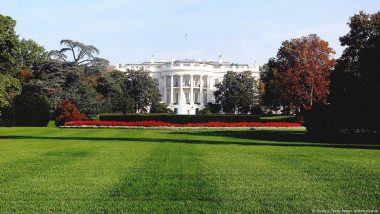The most common crop in the US is not wheat or corn, but lawn grass. From the gardens of Versailles to suburban America, why are well-manicured lawn central to our cultural identity?A lawn can feel like a little oasis, our very own patch of nature. But throughout history, lawns have been powerful symbols of orderliness — and wealth.
Also Read | Business News | IEMA Introduces AI Tutor: Revolutionizing Personalized Learning.
When King Louis XIV — also known as the Sun King — moved to Versailles in 1661, he commissioned a famous French landscape architect, André Le Notre, to design the gardens at Versailles palace.
Le Notre understood that the gardens, which included meticulous lawns, were political: They were a way for the king to communicate that all was in order and under control.
The planner notably created a tapis vert, literally a "green carpet" that linked the palace and the gardens.
The lawn was not for walking on, or picnicking on, or for grazing animals — as grassy meadows had been in medieval times. Now it was purely ornamental, a status symbol, a symbol of power and conquest.
"If you look closely at the grass," says Ian Thompson, a retired landscape architect who taught at Newcastle University in the UK, of a classic meadow, "there's all kinds of other plants in there … you would find things like daisies and violets and clover and strawberries in there, for example."
The pure reason of cut grass
But the lawns of Versailles are a pure grass that has conquered these flowers and weeds. These pristine stretches of grass show a command of nature, of a wilderness that can be hostile and dangerous.
In 17th-century Europe, ideas about humans' relationship with nature were changing. French philosopher Rene Descartes argued that nature, as represented by the body, is chaotic and is separate from the mind, from the higher reason of man.
The lawn was therefore a symbol of the rational mind colonizing the irrational body. The idea has endured for centuries.
Louis's lawn was adapted in part across the Channel. The 18th-century English aristocracy liked to incorporate meadows and thickets of trees into their more "natural" gardens — even if still highly stylized and mown.
This curated country landscape was in turn appropriated by the French queen Marie Antoinette, who wanted to create a mini-English garden in her palace.
The rise and decline of the suburban lawn
So too in America, the English garden — as opposed to the king — ruled.
President George Washington ordered the creation of a bowling green and deer park at his vast residence and slave plantation at Mount Vernon. He is said to have imported English grass seed for the job.
Thomas Jefferson, the third US president and author of the Declaration of Independence, also cultivated a grass area called "the lawn" at his home.
A couple of decades later, home turf was all the rage, with the first horse-drawn lawnmower patented in 1830.
First kept in the backyard, these stretched of well-maintained lawn were soon proudly displayed in the front of US homes.
Like the gardens of the French royals and English gentry before, by the 20th century the American front yard became a kind of exhibition space, a symbol of one's mastery of nature.
But it had to remain uncluttered and pristine.
"It's basically a piece of grass with nothing on it," said Jenny Price, a writer and environmental historian, of the American lawn. "This is a very class-oriented thing, generally [people] do not approve of putting anything in your front yard. No chairs, no lawn ornaments, no anything."
She adds that the controlled lawn demands a lot of irrigation and pesticides. In an age of climate change and water scarcity, lawns are again giving way to trees and diverse species.
"We are going back towards the flowery mead," said Ian Thompson. "And actually the suburban garden is one of the places which, you know, can be a sanctuary for wildlife. I think this is all to be encouraged, really."
This article was adapted from an episode of the DW podcast, "Don't drink the milk: The curious history of things," by Charli Shield and Rachel Stewart, edited by Sam Baker.
(The above story first appeared on LatestLY on Nov 18, 2024 03:40 PM IST. For more news and updates on politics, world, sports, entertainment and lifestyle, log on to our website latestly.com).













 Quickly
Quickly




















